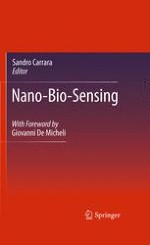2011 | OriginalPaper | Buchkapitel
4. Surface Plasmon Resonance on Nanoscale Organic Films
verfasst von : Willem M. Albers, Inger Vikholm-Lundin
Erschienen in: Nano-Bio-Sensing
Verlag: Springer New York
Aktivieren Sie unsere intelligente Suche, um passende Fachinhalte oder Patente zu finden.
Wählen Sie Textabschnitte aus um mit Künstlicher Intelligenz passenden Patente zu finden. powered by
Markieren Sie Textabschnitte, um KI-gestützt weitere passende Inhalte zu finden. powered by
